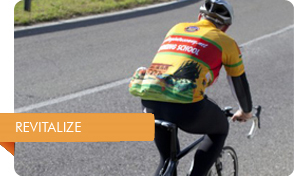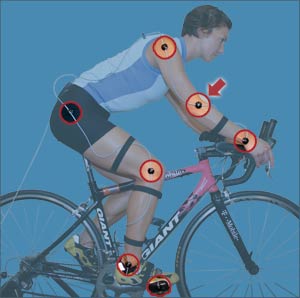Air em up! Um, your tubes... Depending on your bike and the type of tire you ride on, they will require different volumes of air. You can't just air them up once and ride without filling them again. ALL tires go flat over time, but the higher performance the tire/tube, the faster it loses air. Here is a fantastic Youtube that covers both types of valves!
Lube it up - your chain that is... no, not with 40 weight. I ride 50 miles at a shot and will rub my chain about every 100 to keep the grit down. Ask your salesmen at the local store which lube is best for your bike and chain and how often to wipe. I have a "dry" lube that says you can't wipe enough. I could spend all day wiping my chain because the composition sheds this black stuff... its not actually street dirt, its chain. Below is a simple Youtube of applying the lube, my lube is then followed by wiping with a towel and I run the chain backwards same as this to clean. This is maintenance you should do often to keep from having buildup over time that requires replacements. You will need to have full maintenance at some point. I'll cover that later.
Cross chain? huh? When you look at all of those juicy gears on your bike it turns out that you really shouldn't use two of them. Check out this video, he explains it really well!
What are those bars for on those other bikes? I know you see people leaning comfortably forward on two bars in the center of their bikes, like this:
The ride is in a body position, like this:
What you need to understand is that these bikes, and those handlebars are designed for triathletes, not road cyclists. I made the same "when can I add some of those to my bike" comments and got the "never" response from my bike guy. The Tri bike is ergonomically different to allow the rider to only use specific muscles when riding. Think about it, they have to swim, run and ride to complete the event. This bike allows for relief of muscles needed for the swimming and running when possible. Sure, you could choose to just by a tri bike and only ride road with it, but you won't get the workout or rides you're looking for long term. SO, step away from the handlebars...
Have a flat? Tools, you need tools! *insert grunting here*... who doesn't love tools? But seriously, when you purchase your bike, be sure to get an under seat bag and fill it with a spare tube, some patches, some CO2 and maybe a multi-tool. They look a little like this:
Now you have some tools, make sure to attend the maintenance workshop some bike shops have that will instruct you on how to change YOUR tube if you get a flat. I would add a video, but there are way to many bikes or wheel sets to cover, so get some one on one instruction before heading out for that 100 mile ride!
Liquids, snacks - hey dummy, they didn't put those pockets on the jersey for nuttin! To be serious, if you really intend to ride you need water in your water bottles and snacks in your pockets. A short ride you'll be fine, but a 40-50 (or more) mile ride you will need to break and possibly consume some calories. Depending on your normal diet, water intake, alcohol intake, etc... you may need more then other's. Nutrition for the serious rider is a lifestyle. If you are just piddling around the neighborhood, don't worry to much about it.
Get fitted... for you're bike. People always tell me I'd love to ride but I have bad knees or bad whatever and it hurts to ride. I explain to them that a properly fitted bike will not hurt at all. It's true! If the bike is right for you in size, you have the seat, handlebars and pedals adjusted for YOU, you'd be amazed at how easy it is!
Lastly for now, listen to your bike. I know some of us are bad about noticing something is wrong with the car because we keep the radio up so loud... but when your riding, especially with a new bike, pay attention. A noisy bike means that something is lose, stretched or you're not taking proper care. Either way, a bike in poor condition can leave you stranded or worse.
So now that you've had some fun at my expense, feel free to post your silly moments or questions here on the blog or on my Google Plus page and I'll add them to this blog for fun! If you want some credit for your duh moment, let me know!
post publish comments you need from Jack Cane Custom Cycles:
Unfortunately, I see this way too much: Athletes who lube a chain with out cleaning it -- NEVER lube a dirty chain. You essentially turn it into liquid sand paper, which drastically shortens the life of your components. I will be creating a video on a couple points like this soon.(When he does I'll post that too)
In regards to pumping your tires. If you didn't buy a pump when you bought your bike -- BUY a pump. It's amazing how many people think they'll just pump up their tires at their local bike shop (LBS). Spend the extra $30-$40. It saves so much time and money. If you don't properly inflate your tires before every ride, you are more prone to punctures. Your ride quality suffers. Most importantly, you could damage your rim, which is way more than $40 to repair.
Don't forget tire levers in your saddle bag. Typically multi-tools are metal which can damage your rim when you're taking the tire off (especially if it slips). A plastic tire lever protects your rim and makes it easier to take the tire off.
End Edits






I think you forgot to mention my favorite.
ReplyDeleteUnclip first then stop - http://www.youtube.com/watch?v=n45cxCJcqtU
Haha! Creatively written post about bikes! Hope more people will see the fun that one can get from biking.
ReplyDelete